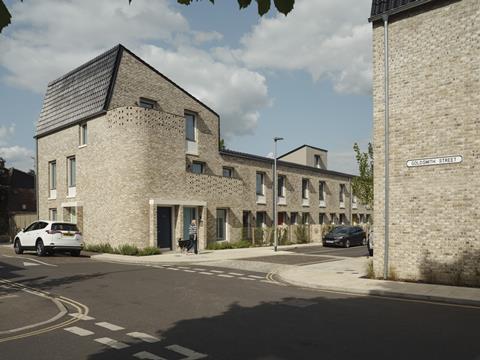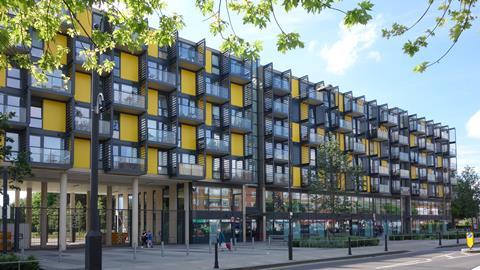Developers are more interested in low-carbon homes since Stirling prize went to Passivhaus scheme, architect claims
Awarding the RIBA Stirling prize to Passivhaus residential scheme Goldsmith Street was a “watershed” moment for sustainable housing design, according to a leading architect.

Mark Rowe, principal at Penoyre & Prasad, said that since the prize went to the council housing scheme in Norwich, residential developers had been asking the practice for much higher levels of sustainability on new projects.
He said: “It’s clear that Goldsmith Street winning the Stirling prize is a watershed. Since then, around half of our clients are saying they want zero carbon or Passivhaus schemes, even if they’re not always clear what that is.
“Obviously Goldsmith Street got great publicity. The next calls we got for residential projects were for Passivhaus and zero carbon. Frankly developers are asking for this, it feels like it has reached a tipping point and minds are changing.”
>> Read: Norwich social housing scheme wins Stirling prize
Rowe was speaking as the practice, alongside soon-to-be parent company Perkins and Will, pledged to offer all clients fully costed concept designs for delivering net-zero carbon buildings free of charge. He said the firm wanted to give developers and clients a costed choice to build more sustainably without having to sell it as an additional service.
The firm will make clear to clients what the operational emissions gap of their buildings will be, and how best to close it in line with the UKGBC’s 2019 definition of net-zero operational. Clients would then be free to choose whether to work up the design with standard energy performance, or the scheme which delivered net-zero operations.
Rowe said the difference between hitting building regulations and net-zero was not huge in many cases, and could often be achieved simply by adding a few more photo-voltaic panels and improving air-tightness and insultation. “A practice like ours is already doing the sensible passive measures to improve performance,” he said. ”In my experience it’s about tweaking the design.”
He said that as well as the publicity surrounding Goldsmith Street, the largest UK social housing scheme to meet the stringent Passivhaus sustainability standard, clients’ minds had been changed by the climate strikes and the influence of their children returning from school and university with questions about whether their business was sustainable.
Norwich city council, the client behind Goldsmith Street, claims that the scheme’s residents can heat their two-bed homes for as little as £150 a year.

Penoyre & Prasad, co-founded by former Riba president Sunand Prasad, has designed housing schemes for clients including Grainger, ThisLand and the London Borough of Brent.
Asif Din, sustainability director at Perkins and Will, said: “With the UK pledging to be net-zero by 2050, designing in energy efficiency will ensure that these climate-resilient and carbon-efficient buildings will be attractive and viable investments, future-proofing clients against the possibility of stranded assets.”
Dame Alison Nimmo, chief executive of commercial and residential developer the Crown Estate, said: “Climate change is the issue of our time and this pledge is a shining example of how we can start to shift thinking in the industry by bringing together developers, architects and occupiers to reduce the impact of real estate on the environment.”










No comments yet